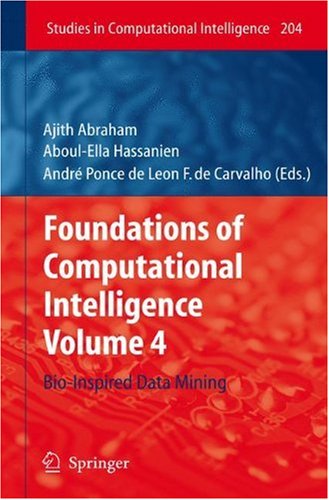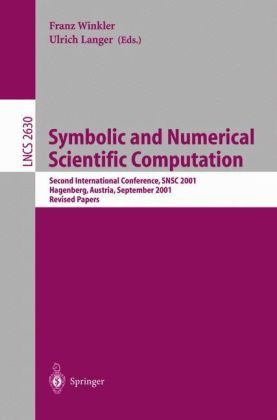Neal Wagner, Zbigniew Michalewicz (auth.), Ajith Abraham, Aboul-Ella Hassanien, André Ponce de Leon F. de Carvalho (eds.)9783642010873, 3642010873
Recent advances in the computing and electronics technology, particularly in sensor devices, databases and distributed systems, are leading to an exponential growth in the amount of data stored in databases. It has been estimated that this amount doubles every 20 years. For some applications, this increase is even steeper. Databases storing DNA sequence, for example, are doubling their size every 10 months. This growth is occurring in several applications areas besides bioinformatics, like financial transactions, government data, environmental monitoring, satellite and medical images, security data and web. As large organizations recognize the high value of data stored in their databases and the importance of their data collection to support decision-making, there is a clear demand for sophisticated Data Mining tools. Data mining tools play a key role in the extraction of useful knowledge from databases. They can be used either to confirm a particular hypothesis or to automatically find patterns. In the second case, which is related to this book, the goal may be either to describe the main patterns present in dataset, what is known as descriptive Data Mining or to find patterns able to predict behaviour of specific attributes or features, known as predictive Data Mining. While the first goal is associated with tasks like clustering, summarization and association, the second is found in classification and regression problems.
Computational tools or solutions based on intelligent systems are being used with great success in Data Mining applications. Nature has been very successful in providing clever and efficient solutions to different sorts of challenges and problems posed to organisms by ever-changing and unpredictable environments. It is easy to observe that strong scientific advances have been made when issues from different research areas are integrated. A particularly fertile integration combines biology and computing. Computational tools inspired on biological process can be found in a large number of applications. One of these applications is Data Mining, where computing techniques inspired on nervous systems; swarms, genetics, natural selection, immune systems and molecular biology have provided new efficient alternatives to obtain new, valid, meaningful and useful patterns in large datasets.
This Volume comprises of 16 chapters, including an overview chapter, providing an up-to-date and state-of-the research on the application of Bio-inspired techniques for Data Mining.
Table of contents :
Front Matter….Pages –
Front Matter….Pages 1-1
Adaptive and Self-adaptive Techniques for Evolutionary Forecasting Applications Set in Dynamic and Uncertain Environments….Pages 3-21
Sequence Pattern Mining….Pages 23-48
Growing Self-Organizing Map for Online Continuous Clustering….Pages 49-83
Synthesis of Spatio-temporal Models by the Evolution of Non-uniform Cellular Automata….Pages 85-104
Front Matter….Pages 105-105
Genetic Selection Algorithm and Cloning for Data Mining with GMDH Method….Pages 107-125
Inducing Relational Fuzzy Classification Rules by Means of Cooperative Coevolution….Pages 127-147
Post-processing Evolved Decision Trees….Pages 149-164
Front Matter….Pages 165-165
Evolutionary Fuzzy Clustering: An Overview and Efficiency Issues….Pages 167-195
Stability-Based Model Order Selection for Clustering Using Multiple Cooperative Particle Swarms….Pages 197-218
Front Matter….Pages 219-219
Data-Mining Protein Structure by Clustering, Segmentation and Evolutionary Algorithms….Pages 221-248
A Clustering Genetic Algorithm for Genomic Data Mining….Pages 249-275
Detection of Remote Protein Homologs Using Social Programming….Pages 277-296
Front Matter….Pages 297-297
Optimizing Information Retrieval Using Evolutionary Algorithms and Fuzzy Inference System….Pages 299-324
Web Data Clustering….Pages 325-353
Efficient Construction of Image Feature Extraction Programs by Using Linear Genetic Programming with Fitness Retrieval and Intermediate-Result Caching….Pages 355-375
Mining Network Traffic Data for Attacks through MOVICAB-IDS….Pages 377-394
Back Matter….Pages –







Reviews
There are no reviews yet.